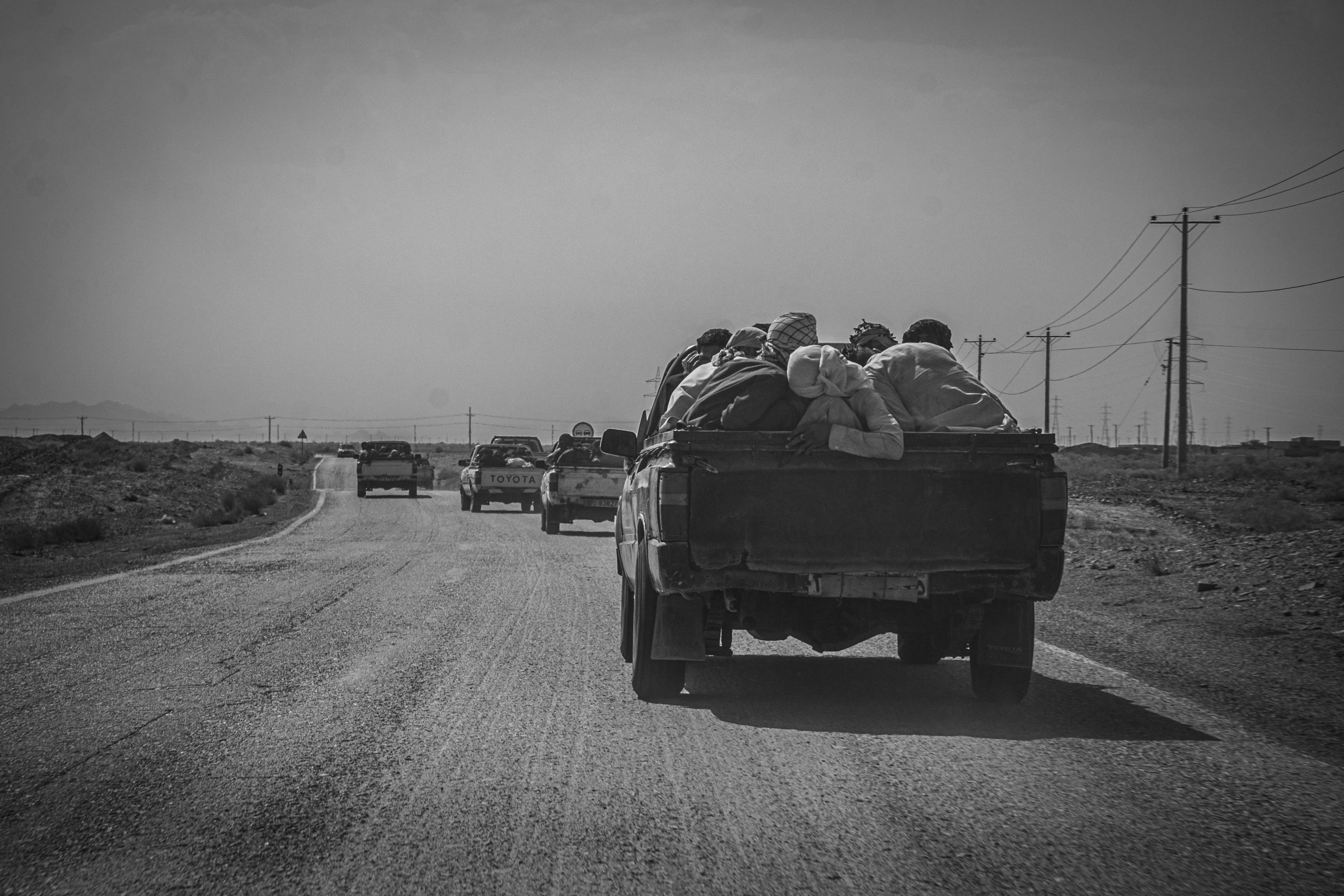
Afghanistan has recorded the world’s most prolonged armed conflict in the last 150 years. Two generations have been born into war and have lived during war without being able to imagine a peaceful future. The only thing most Afghans remember is seeing their towns and country, as a whole, being passed around among different groups and belligerent countries. They see that the endless cycle of war has only led to bloodshed and bloodied soil on graves. This forty-year conflict has brought cold-blooded massacre, ruins, and unprecedented emigration. For those who have chosen emigration, illegal passage across borders is the quickest, and yet the most dangerous way, to reach their destination. This story is only a glimpse of the sorrowful journey – with little chance for survival and success – that these travelers embark on.
Passing the border of Iran and Afghanistan is very difficult due the rigorous border control. The journey begins at Shahr-e-Naw located in the southern part of Afghanistan. The smugglers take the immigrants across the border to Pakistan. They reach the border of Iran and Pakistan after a 9-day journey of 700 kilometers to the south. The immigrants walk for a full day in mountainous and impassable areas. The whole journey from Shahr-e-Naw to Tehran is managed by a few key smugglers. Each one of them has organized a group of drivers as well as workers to clear the roads and attend to rest stops. These workers and drivers are well versed in the local terrain and are paid a set amount of money per individual they smuggle across. The Afghan immigrants are packed together in vehicles. The drivers drive at blood-curdling speeds on the dangerous roads just to avoid police ambush. If there is an accident, at times not even one person survives. It is estimated that 30 to 50 people die on the road because of accidents, drowning, or being shot by the military or police. The Afghan immigrants pass intercity police checkpoints by walking deep into the night. They use damaged houses or unfinished buildings to hide and rest while waiting to be delivered to the next smuggler. There are no proper facilities. They lie on the ground – just bare dirt, eat an insignificant amount of food, and have to whisper for fear of being detected. Children are not allowed to play. One mistake could lead to a police raid, meaning that all their efforts and hardships were in vain.
Terror, hunger, humiliation, and beatings inflicted by the smugglers or officers are common on this twenty-day journey. Omid, the son of one of the smugglers, prepared the immigrants to get in a car by using offensive and vulgar swearwords. A smuggler beat and made an immigrant, who was stronger than him physically, take off his leather coat just because he liked it. The immigrant’s lack of resistance led him to being locked up for two weeks.
When I was a child, my city welcomed many immigrants who had fled from their country because of the Soviet invasion. A shared language, common culture, and similar clothes, enabled me to connect with them more. I have continually witnessed the emigration of Afghan people since then. I have always been stuck by the reality of the situation. These people must have been so helpless and desperate in their home country that they were willing to undertake such hardships and risks, just for the hope of a better future.
Ayyub was an immigrant who had left his bride just six days after their marriage. Zakir had to leave his home one month after his brother and father had been brutally murdered by the Taliban. They both said that terror, insecurity, and unemployment had surrounded them and their families. They had no choice but to make the journey. They believed that it would have been better for them to stay if they had a good paying job in Afghanistan and were able to provide for their families.
Many Afghan immigrants experience this journey multiple times. They work in Iran for a few years and return to Afghanistan for a few weeks to see their wives and children. They honestly believe that the journey is getting harder and more perilous every year. They say the only thing they really want is to be sure that they will reach their destination safely.
This project has attempted to give a voice to those who have been lost and left behind in the middle of the clamoring conflicts between the politicians, countries, and international organizations. It aims to ask what makes a human being choose dying on the road over staying at home.







































